Your New World beginner’s guide to crafting and gathering! If you’re new to New World’s trade skill systems, there are a few things you should know. There are 7 distinct making talents, 5 different refining skills, and 5 different gathering skills. Every trade skill has a hard maximum of 200 points, including refining and gathering.
Timestamps:
00:00 – Beginning
00:35 – Basics of New World’s Trade skills
01:04 – 1st Gathering Skill – Woodcutting
02:05 – 2nd Gathering Skill – Mining
03:04 – 3rd Gathering Skill – Fishing
03:49 – 4th Gathering Skill – Harvesting
04:27 – Gathering Tool Basics
04:59 – 5th Gathering Skill – Tracking & Skinning
05:50 – Refining Trade skills Introduction
05:56 – 1st Refining Skill – Smelting
06:17 – Material Conversion Mechanics & Secondary Refining Resources
07:19 – 2nd Refining Skill – Woodworking
07:49 – 3rd Refining Skill – Leatherworking
08:31 – 4th Refining Skill – Weaving
08:50 – 5th Refining Skill – Stonecutting
11:00 – Trade skill Tips & Tricks
16:15 – Brief Crafting Trade skills Rundown
16:20 – Weaponsmithing
16:49 – Armor crafting
17:08 – Engineering & Furnishing
18:01 – Arcana/Alchemy
18:52 – Cooking
19:14 – Conclusion & Last Tips
01:04 – 1st Gathering Skill – Woodcutting
Also known as “in-game logging.” This is the talent you’ll use to down trees. It starts with young trees that you may chop down straight away, and you can acquire normal wood and semi-rare goods like Petrified Wood from them. You may chop down mature trees at level 50 woodcutting, which starts to yield several types of wood known as Aged Wood. Another point to add is that to begin gathering, simply walk up to a node or resource and press E.

Following the mature trees, we come to Wyrdwood, a magical variety of trees that are usually linked with Azoth, one of the island’s magical resources. When you begin cutting this, you are collecting Tier 4 resources in the woodcutting area. Various factors, such as acquiring perks-enhanced armor, gathering food, and so on, might impact your odds of obtaining these uncommon goods.
After Wyrdwood, we have Ironwood, which is the final resource. These trees are more scarce and are regarded to be the highest-tier trees that you may chop.
02:05 – 2nd Gathering Skill – Mining
Mining is linked to a variety of occupations, including stonecutting, and not only smelting. You can mine Iron at level 0, Silver at level 10, Oil from Seeping Stones at level 20, Gold ore at level 45, and Alchemy stones at level 50. With vocations like armor crafting and weaponsmithing linked to Iron, and gem crafting and stonecutting linked to Silver and Gold, in addition to platinum and, of course, normal stone boulders that may be mined.
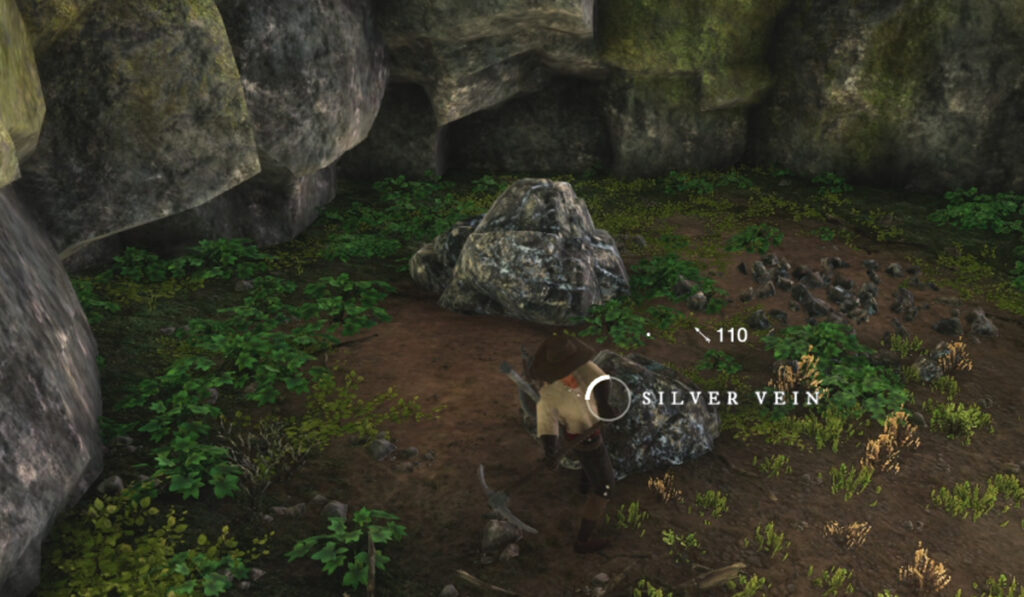
Tier 4 includes Starmetal, which can be mined for 100 gold, Lodestone, which is a higher tier type of stone, Platinum, which can be mined for 110 gold, and Orichalcum, which is tier 5 and can be mined for 175 gold. You’ll note that the levels for obtaining resources aren’t the same as the levels at which they’re monitored. The tracked part indicates that after you’ve passed the threshold, these resources will appear on your compass.
03:04 – 3rd Gathering Skill – Fishing
Some resources can also appear on the map, and all gathering professions have something in common, although fishing is a little different. You may go to any body of water and press F3 to bring out your fishing pole if you have one. You can utilize fishing bait that you can find or construct, as well as fishing hotspots, to improve your chances of further success.
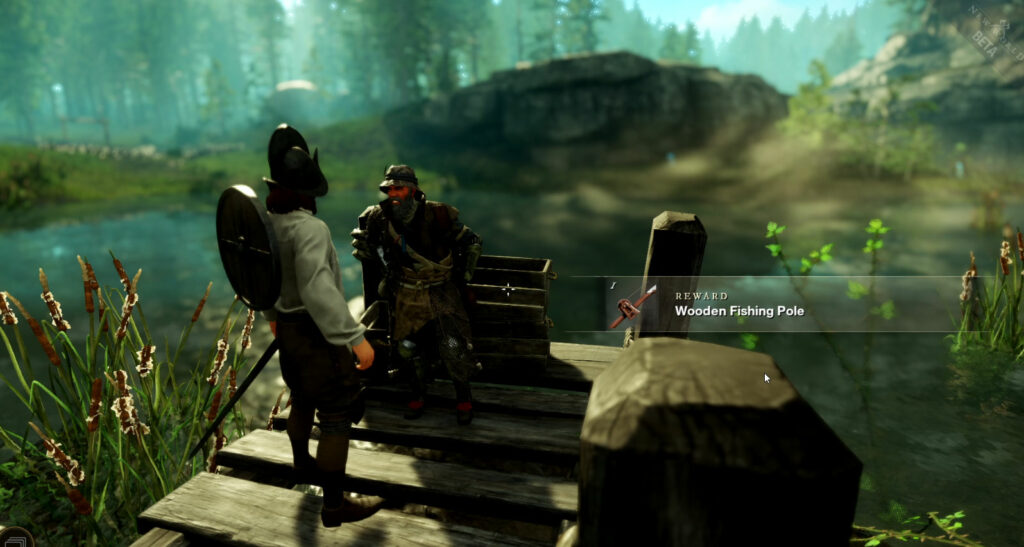
Freshwater, which is generally a lake or a river, and saltwater, which is often linked with marshes or the ocean, are the two types of water you may fish in. What sort of fish you catch depends on where you fish, what kind of bait you use, and whether you utilize a fishing location or just a random area on the map.
Fish are also utilized in cooking, and after casting your line, you just play the fishing minigame by reeling it in while holding down the left mouse button and releasing it for a few seconds to avoid snapping the line. You’ll have a fish in no time if you continue the process.
03:49 – 4th Gathering Skill – Harvesting
You’ll be able to immediately gather agricultural plants, hemp, fungus, and magical animals. Magical plants are at level 30, Silkweed is at level 100 (tier 4), and Wire fiber is at level 175. Although this vocation is most closely connected with Alchemy and tailoring, the fungus you collect, such as Prisma flowers, can provide pigments for making colorful dye in the cooking station.
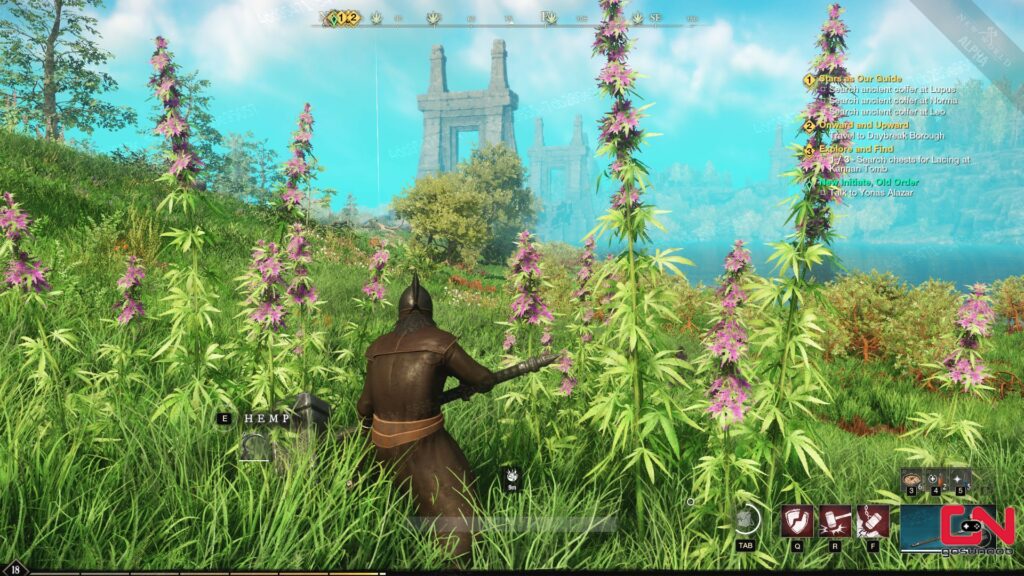
The magical plants and creatures will provide you with many materials that you may utilize in your crafting or Alchemy, including Dragonglory plants, Lifeblooms, Salamander snails, and many others.
04:27 – Gathering Tool Basics
With any of the gathering professions, the tools, like the equipment, have levels, and the tier of the tool can affect your gathering speed as well as your probability of gaining rare resources such as gathering food, trophies you display in your home, gear with gathering or crafting benefits, and so on.
The higher you go in these collecting and crafting professions, the more likely you are to acquire rare results in prior tiers. For example, if I’m mining and then return to farm silver ore in the hopes of acquiring uncut gems for stonecutting, I could have a greater chance of receiving lower-tier gems from the node.
04:59 – 5th Gathering Skill – Tracking & Skinning
Finally, there’s tracking and skinning, which refers to any vocation that conducts commerce using skins or animal parts. It begins with small prey such as rabbits, turkeys, peacocks, and other similar creatures. The remainder of them are now listed as zero, which includes boars, deer, low-level wolves, and bison.
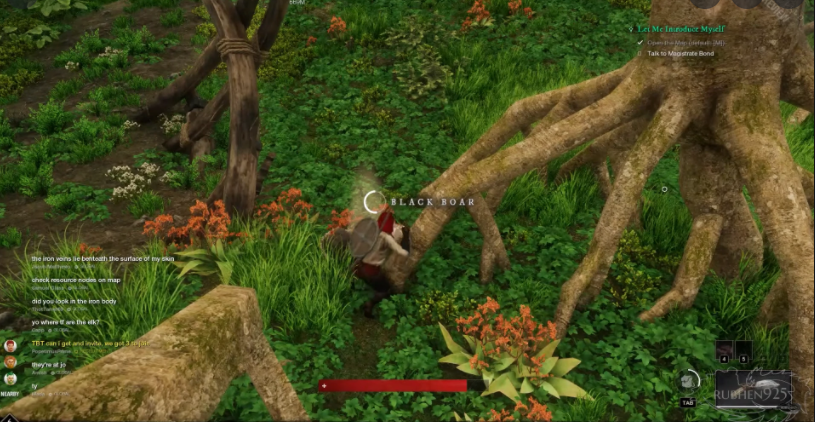
When you start hunting higher-tier animals, such as bears, Edengrove fauna, corrupted animals, and other similar creatures, you’ll find that the skinning level required starts to grow around level 25-30.
Certain crafting recipes, like those for the other gathering professions, will necessitate uncommon goods obtained exclusively from specific levels or tiers of opponents. You could come across a name or a standard recipe that calls for Scarhide. If you check at the tooltip, you’ll see that it can be obtained by skinning animals of that tier, both common and rare.
05:50 – Refining Trade skills Introduction
These were the tools we utilized to bridge the gap between collecting and crafting talents. There are a total of 5 refining trade skills available.
05:56 – 1st Refining Skill – Smelting
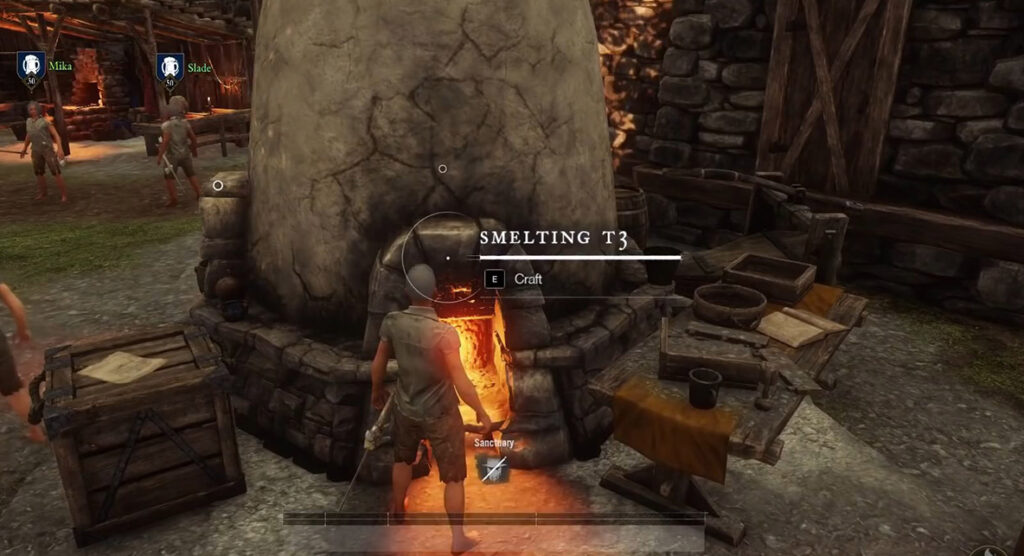
Starting with basic smelting, which deals mostly with metal ingots for various vocations, but also lets you smelt bars for gem crafting and charcoal.
06:17 – Material Conversion Mechanics & Secondary Refining Resources
There is a material recovery section, which is found in several refining professions, that allows you to break down higher-tier resources and convert them to lower-tier materials for crafting. This is important to know if you want to speed to the endgame before starting the farming, collecting, and crafting stages, which offer greater benefits.
When you begin the refining process, you will discover secondary materials in the game. They term it “flux,” and it refers to the secondary material that may be used to purify the ore. Additional ones include solvent, wood sandpaper, and tannin with crossweave for other refining abilities.
07:19 – 2nd Refining Skill – Woodworking
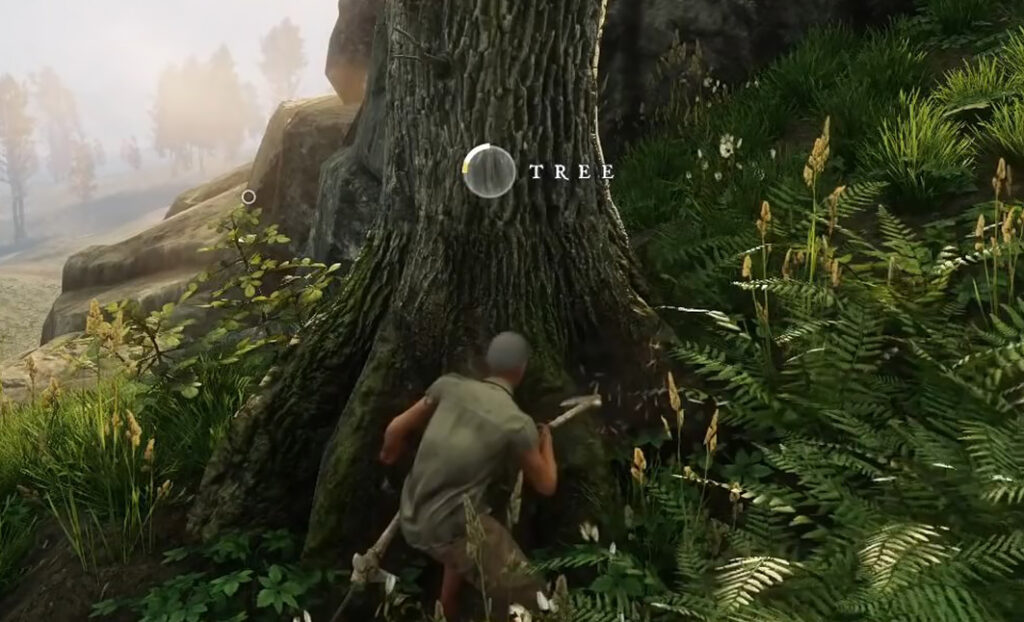
It begins with ordinary timber from young trees, then progresses to lumber that requires aged wood, especially Wrydwood and both ironwood and glittery ebony from old trees for maximum tier resource. To refine glittering ebony, you’ll need to collect items that only have a chance to drop from tier 5 trees, which will also appear on the crafting side.
07:49 – 3rd Refining Skill – Leatherworking
We have coarse leather, which is made from rawhide obtained from lower-tier animals, tough leather at tier 3, layered leather at tier 4, and both infused and runic leather at tier 5. When it comes to skinning, it might be difficult to know where to obtain the various varieties of leather right away.

Rawhide may be obtained from almost any animal below level 20, while iron hide can be obtained from level 50+ animals when it begins at tier 5. Between those two points, you’ll find thick hide, which is typically linked with animals under the level of 50, but around the levels of 30-35.
08:31 – 4th Refining Skill – Weaving
Usually starts off with linen that is made with fibers that you will need to gather from hemp. Sateen at tier 3 and then Silk at tier 4, and silk threads come from the silkweed plant, and finally infused silk will come from the wire fiber.
08:50 – 5th Refining Skill – Stonecutting
Instead of merely refining, it’s becoming more of a crafting career. Stonecutting entails refining stone and loadstones into blocks, as well as cutting gemstones so that you may plug them into equipment for various advantages depending on which one you use.
Each of these gems has a variety of effects that are dependent on whether the gem is placed inside a weapon or a piece of armor. When a gem is placed into a weapon, 20% of the damage is converted to fire. The damage will scale according to the weapon damage or the character’s intellect, whichever is greater.
There is a mechanism behind this, and there are a few more elemental gems that accomplish the same thing, but for various elements, such as aquamarine for ice damage and amethyst for void damage, there are also some that stack off focus, such as amber.
If you place these gems inside armor, however, they will typically provide damage absorption for that specific element. There are additional sorts of gems that have entirely different properties, such as malachite, which deals extra damage during crowd control, emerald, which increases damage against enemies with lesser health, and so on.
11:00 – Trade skill Tips & Tricks
The first is that as a craftsman, you now have a hard maximum of 200 on all trade skills. As you go through the tiers, you’ll notice that you’re getting better at making things from earlier levels. You’ll start manufacturing max quality goods more frequently when you get to tier 4.
The quality system works by starting with grey gear, which is considered common, then moving on to green gear, which is considered uncommon, blue gear, which is considered rare, purple gear as epic, and ultimately orange gear, which is considered legendary. Multiple criteria, such as the number of perks an item possesses, play a major role in determining its relative quality level.
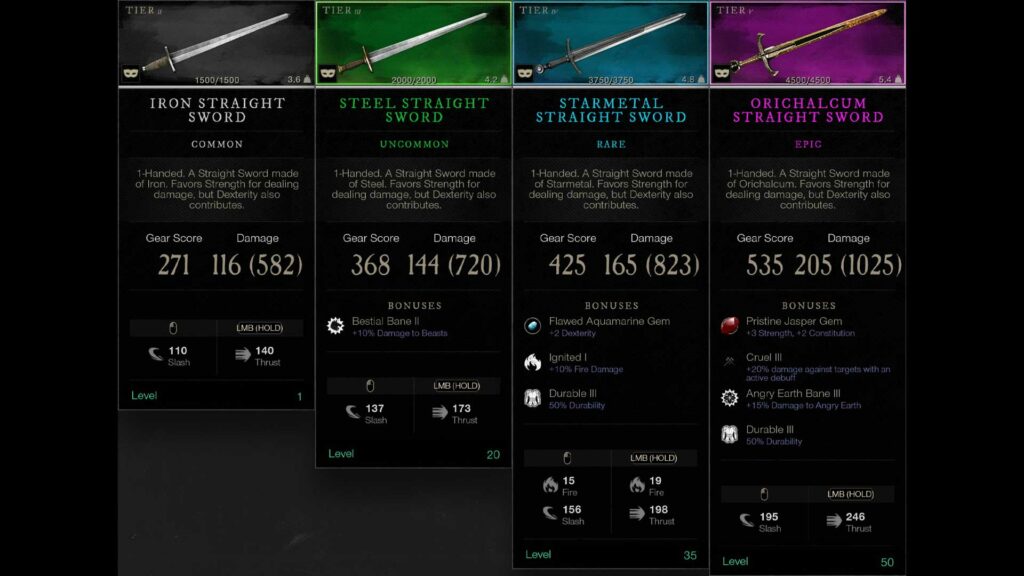
You’ll have a better chance of getting a gem slot, characteristics, and bonuses on the item if you utilize Azoth, a magical resource, throughout the crafting process. There will always be a possibility for this by default, but it may be impacted further not just by Azoth, but also by creating gear that is comparable to the gathering.
This, in addition to home trophies, gathering and making food, building up the trade skill in general, and even territorial bonuses that are established through settlement management and implemented through town projects, as well as the secondary resources you use while crafting, all add up.
16:20 – Weaponsmithing
This profession mostly takes place at the forge workbench, where you may make Swords, Great Axes, Rapiers, and Warhammers. Spears and Hatchets may also be crafted within the forge, although they are directly tied to the engineering skill. Metal armor may be crafted within this bench as well, although it requires the armor-building ability.
Weaponsmiths may also make equipment repair kits and honing stones to briefly increase your weapon’s damage. Consumables will be quite important in the formula for success, so keep that in mind.
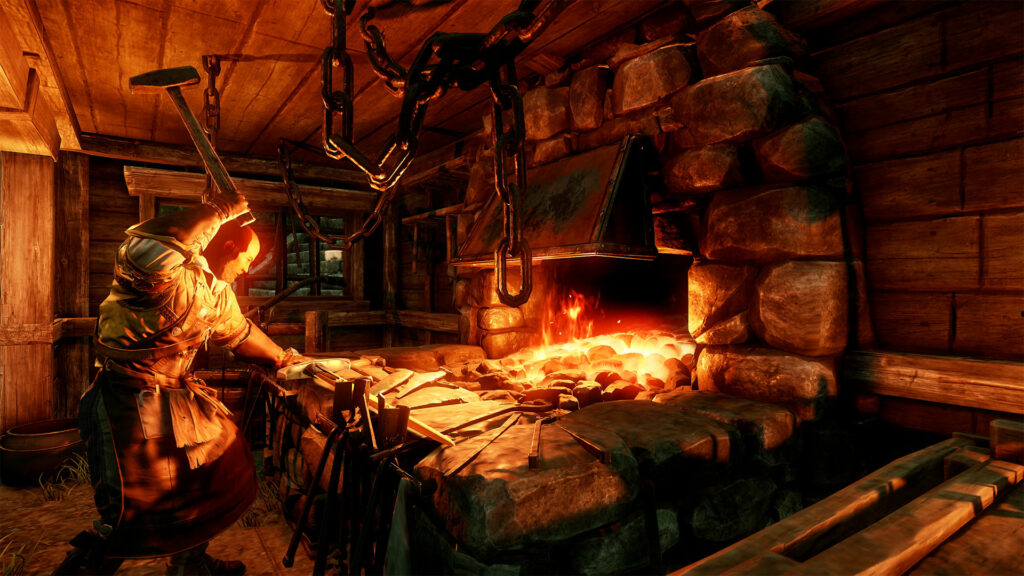
16:49 – Armor crafting
Armoring is another name for it. Light cloth armor, medium leather armor, fur armor, multi-purpose bags that enhance your carry capacity, jewelry that increases your attributes but also requires the gem crafting skill, repair kits for your equipment, and absorption balms, are all made in the outfitting station.
17:08 – Engineering & Furnishing
This profession is typically performed at a workshop bench. We’ve brought muskets, bows, ammo, and arrows, as well as equipment like pickaxes for mining, fishing poles for fishing, logging axes for woodcutting, skinning knives for skinning, and sickles for harvesting, to this location.
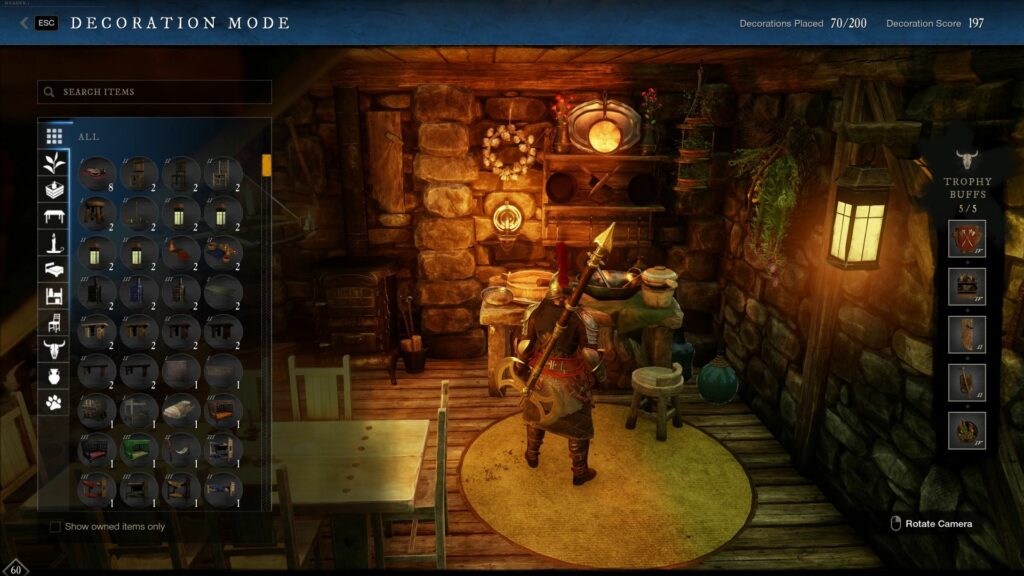
This bench also includes house-furnishing goods, which is related to the furnishing trade talent. Remember that you’ll need to explore the open world for new furnishings and schematics to extend your possibilities. This profession also allows you to make home trophies, which can be used to get various benefits in fighting, collecting, and crafting. They’ll come in handy in almost every situation.
18:01 – Arcana/Alchemy
Alchemy is well-known, and it takes place at the Arcana Repository. You’ll make fire staffs, life staffs, ice gauntlets, and consumables including healing potions, mana potions, focus potions, and regeneration potions in this area. It also has the capacity to manufacture coatings that increase your damage against certain sorts of adversaries, such as animals, The Lost, and so on.

Wards, such as beast wards, corrupted wards, and ancient wards, provide resistance to certain mob kinds, in addition to elemental wards such as fire absorption, lightning, void, arcana, nature, and so on.
Last but not least, utilizing the arcana bench is the sole means to upgrade elemental essence goods such as death, water, and fire essence. You may now utilize lower-tier magical items to upgrade to a higher tier using the arcana bench.
18:52 – Cooking
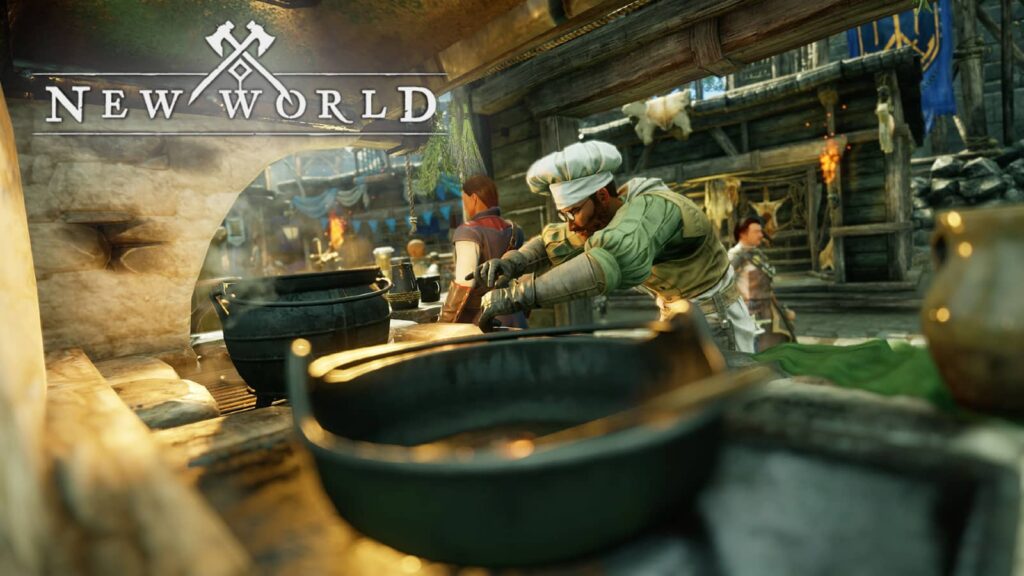
This, of course, takes place in the kitchen, where you may make a variety of food items such as mana recovery, health recovery, fishing bait, and even both gathering and making food. You may make dyes at this station as well.
Credits
| Program | Founding Writers |
| Author | Alice Parilla |
| Youtuber | Ser Medieval |
| Publisher | MGN |
| Game | New World |